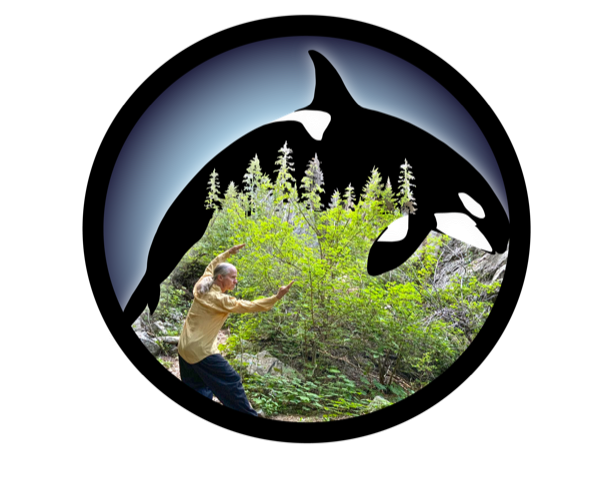Alt text:
If you live in Los Angeles (around 33°52’N, roughly the latitude of Hermosa Beach) the black hole in V404 Cygni passes over you each day. On Christmas Day it will be directly overhead around 2pm.
Imagine growing up on a tidally locked world, living in the day, until you wander off for long enough to discover the night.
Hitchhikers guide to the galaxy has an alien species that evolved on a planet (Krikkit)with constant thick dust clouds.
Upon first witnessing the glory and splendor of the Universe, they casually, whimsically, decided to destroy it, remarking, “It’ll have to go.” (…) the Krikkiters built an incredible battlefleet and waged a massive war against the entire Universe. The Galaxy, then in an era of relative peace, was unprepared, and spent the next 2,000 years fighting the Krikkiters in a war that resulted in about two “grillion” casualties
Isaac Asimov also mused about ribbon worlds. ie tidally locked planets with a habitable zone in the twilight regions.
I seem to recall also reading a story about a species on a ribbon world but because of precession had a 10,000 year (or so) day. They had a constant slow migration and eventually started finding the ancient forgotten ruins of their own society.
Also nightfall by Asimov.
Can you remember the name of that 10000 year book? It’s been ages since I’ve read some hard science of the type
I’m sure I read it online it might have just been a scifi writing prompt from the site that must not be named (reddit).
I’m glad Asimov also thought of The Long Street or Eternal Dusk I wondered how wide the strip of settleable territory might be, say on a earth-sized tide-locked planet.
The moon is tide-locked to the earth, but wobbles back and forth, so a tide locked world might also have a day / season cycle where the fringes get extra hot / cold.
What a terrifying thought! I imagine there’s some other sapient race out there that has experienced that.
Now think about the kinds of predators that evolved in constant night, which those people found while exploring the darkness. Then they develop telescopes and discover other worlds on which the night moves…
Unless the animals have developed a way to move for miles every day, there should be predators who are adjusted for the night side, and predators who are adjusted for the day side that would be well known and defended against from the prey on their side. For a sentient species, figuring out how to defend against one or the other shouldn’t be too hard.
What would be harder to defend against would be those predators who live in the twilight areas are close to both day & night.
Kinda. I imagine the GP meant predators that live on the border of night specializing in devouring anything that makes a wrong errand and ends-up there. Like the ones we have at the bottom of the ocean.
On a second thought, I don’t think they would be very scary. Probably mostly scavengers.
Is GP me? Haven’t heard of that but I assume it’s similar to OP. In case it is, I elaborated a bit in another reply!
Grand parent; the comment you were replying to.
There’s an old Roger Zelazny story with that exact premise called Jack of Shadows
Wouldn’t the temperature difference and UV (and any other spectra) immediately boil/ kill them?
Probably, yeah. Definitely can’t be good for them. I’m not a biologist, but I encourage anyone reading this to chime in! What happens to cave-dwelling creatures when brought out into the sun for an extended period?
I didn’t make it clear in my original comment, but in my head I imagined a race whose explorers swore off venturing into the darkness after the first few disappearances. Maybe some folklore emerged, and they assumed that “that place” and death are intrinsically related. Then, as their tech became more advanced, they gained the ability to scrutinize the other planets in their star system. Imagine the horror when they see “death” wandering along the surface (rather, the surface moving through it) and they have no clue why theirs isn’t moving.
Is it merely asleep?
This was a fun thought experiment. Thanks for getting my brain churning! I’d love to read someone’s expansion on this idea, if anyone else finds it fascinating. At this point in the lore, I can see religions being born to try and appease Death, or at least prolong its slumber in the frozen hemisphere while they search for answers. Wars are fought, nations fall, yada yada… Maybe it’s best not to draw too many parallels with our own world 😁
I have read a short story about a world with like 9 suns and 3 moons. It’s day all the time, except once every 2000 years, when there is a total solar eclipse. So every 2000 years society falls into chaos, most of the population kills themselves and only rich people, who can afford enough candles/fire or people who are passed out drunk survive the eclipse. At the time the story takes place one astronomer/scientist notices the pattern in their history and like predicts it or something.
Sadly I do not know the link. If anyone recognizes the story I would love to read it again.
Sadly I do not know the link. If anyone recognizes the story I would love to read it again.
It’s called Nightfall, it’s my favorite Asimov short story.
Thank you!
deleted by creator
“My god, it’s full of stars.”
FunFacts
2010: The Year We Make Contact (abbreviated on-screen as simply 2010) is a 1984 American science fiction film written, produced, shot and directed by Peter Hyams.
Peter Hyams children have had interesting career paths. His first son, Chris Hyams, is the CEO of the job search website Indeed. His second son, John Hyams, is a film director (Universal Soldier: Regeneration). His third son, Nick Hyams, works as a battle rap promoter and host under the name Lush One.
Source: Wikipedia
To take this thought to the logical maximum, we are all under the stars, always. All buildings are ultimately outside, and therefore under the stars. Even in the sub-basement of the tallest building, the floors above aren’t that high compared to the atmosphere, and it’s still under the stars.
We’re not under the stars; we are amongst the stars, surrounded by the stars, encircled (ensphered?) on all sides.
That is an excellent point!
“Roofs” are just us closing our eyes and pretending it makes infinity go away.
As per the Planet-building show room on Magrathea, it’s big things that help me recognize the magnitude of the universe around us (or rather our infinitesimal presence in it). I have a 12K x 12K image of the sun (our astronomical societies take them daily) that I look at the details of when I want to be reminded how teeny tiny I am. (The sun alone is 99.8% of the mass of the solar system.)
And there are stars hundreds of times more massive.
How fucking high were they when they made this? I love xkcd, but this one’s a bit out there.
I love it - very reminiscent of his earlier stuff
I want to get mad at your comment, but I can’t because I agree.








